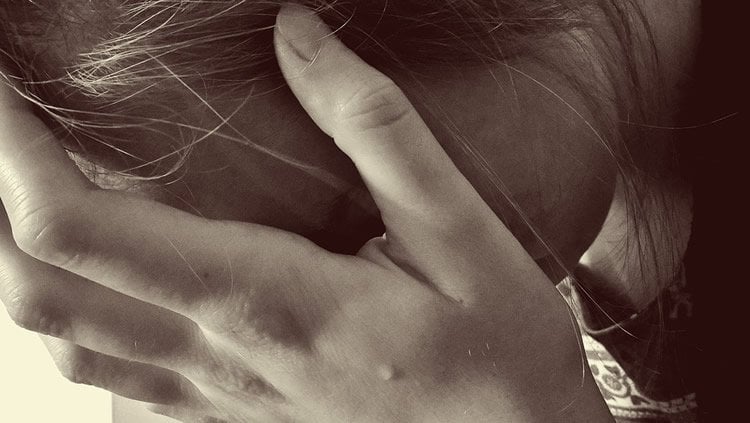Summary: Researchers discover depression can be categorized into four different subtypes, each defined by different patterns of abnormal brain connectivity.
Source: Cornell University.
Patients with depression can be categorized into four unique subtypes defined by distinct patterns of abnormal connectivity in the brain, according to new research from Weill Cornell Medicine.
In a collaborative study published Dec. 5 in Nature Medicine, Conor Liston, M.D. ’08, an assistant professor of neuroscience in the Feil Family Brain and Mind Institute and an assistant professor of psychiatry at Weill Cornell Medicine, has identified biomarkers in depression by analyzing more than 1,100 functional magnetic resonance imaging (fMRI) brain scans of patients with clinical depression and of healthy controls, gathered from across the country.
These biomarkers may help doctors to better diagnose depression subtypes and determine which patients would most likely benefit from a targeted neuro-stimulation therapy called transcranial magnetic stimulation, which uses magnetic fields to create electrical impulses in the brain.
“The four subtypes of depression that we discovered vary in terms of their clinical symptoms but, more importantly, they differ in their responses to treatment,” Liston said. “We can now predict with high accuracy whether or not a patient will respond to transcranial magnetic stimulation therapy, which is significant because it takes five weeks to know if this type of treatment works.”
Approximately 10 percent of Americans are diagnosed with clinical depression each year. It is, by some estimates, the leading cause of disability in many developed countries.
Historically, efforts to characterize depression involved looking at groups of symptoms that tend to co-occur, then testing neurophysiological links. And while past pioneering studies have defined different forms of depression, the association between the various types and the underlying biology has been inconsistent. Further, diagnostic biomarkers have yet to prove useful in distinguishing depressed patients from healthy controls or in reliably predicting treatment response among individuals.
“Depression is typically diagnosed based on things that we are experiencing, but as in election polling, the results you get depend a lot on the way you ask the question,” Liston said. “Brain scans are objective.”

Researchers from Weill Cornell Medicine and seven other institutions derived the biomarkers by assigning statistical weights to abnormal connections in the brain, then predicting the probability that they belonged to one subtype versus another. The study found that distinct patterns of abnormal functional connectivity in the brain differentiated the four biotypes and were linked with specific symptoms. For example, reduced connectivity in the part of the brain that regulates fear-related behavior and reappraisal of negative emotional stimuli was most severe in biotypes one and four, which exhibited increased anxiety.
Liston will seek to replicate and confirm the results of this research and discover if it is broadly applicable to studying the biology of depression and other forms of mental illness.
“Subtyping is a major problem in psychiatry,” Liston said. “It’s not just an issue for depression, and it would be really valuable to have objective biological tests that can help diagnose subtypes of other mental illnesses, such as psychotic disorders, autism and substance abuse syndromes.”
Source: Diane Hess – Cornell University
Image Source: NeuroscienceNews.com image is in the public domain.
Original Research: Abstract for “Resting-state connectivity biomarkers define neurophysiological subtypes of depression” by Andrew T Drysdale, Logan Grosenick, Jonathan Downar, Katharine Dunlop, Farrokh Mansouri, Yue Meng, Robert N Fetcho, Benjamin Zebley, Desmond J Oathes, Amit Etkin, Alan F Schatzberg, Keith Sudheimer, Jennifer Keller, Helen S Mayberg, Faith M Gunning, George S Alexopoulos, Michael D Fox, Alvaro Pascual-Leone, Henning U Voss, BJ Casey, Marc J Dubin & Conor Liston in Nature Medicine. Published online December 5 2016 doi:10.1038/nm.4246
[cbtabs][cbtab title=”MLA”]Cornell University “Neuroimaging Categorizes Four Depression Subtypes.” NeuroscienceNews. NeuroscienceNews, 6 December 2016.
<https://neurosciencenews.com/depression-subtypes-neuroimaging-5691/>.[/cbtab][cbtab title=”APA”]Cornell University (2016, December 6). Neuroimaging Categorizes Four Depression Subtypes. NeuroscienceNew. Retrieved December 6, 2016 from https://neurosciencenews.com/depression-subtypes-neuroimaging-5691/[/cbtab][cbtab title=”Chicago”]Cornell University “Neuroimaging Categorizes Four Depression Subtypes.” https://neurosciencenews.com/depression-subtypes-neuroimaging-5691/ (accessed December 6, 2016).[/cbtab][/cbtabs]
Abstract
Resting-state connectivity biomarkers define neurophysiological subtypes of depression
Biomarkers have transformed modern medicine but remain largely elusive in psychiatry, partly because there is a weak correspondence between diagnostic labels and their neurobiological substrates. Like to other neuropsychiatric disorders, depression is not a unitary disease, but rather a heterogeneous syndrome that encompasses varied, co-occurring symptoms and divergent responses to treatment. By using functional magnetic resonance imaging (fMRI) in a large multisite sample (n = 1,188), we show here that patients with depression can be subdivided into four neurophysiological subtypes (‘biotypes’) defined by distinct patterns of dysfunctional connectivity in limbic and frontostriatal networks. Clustering patients on this basis enabled the development of diagnostic classifiers (biomarkers) with high (82–93%) sensitivity and specificity for depression subtypes in multisite validation (n = 711) and out-of-sample replication (n = 477) data sets. These biotypes cannot be differentiated solely on the basis of clinical features, but they are associated with differing clinical-symptom profiles. They also predict responsiveness to transcranial-magnetic-stimulation therapy (n = 154). Our results define novel subtypes of depression that transcend current diagnostic boundaries and may be useful for identifying the individuals who are most likely to benefit from targeted neurostimulation therapies.
“Resting-state connectivity biomarkers define neurophysiological subtypes of depression” by Andrew T Drysdale, Logan Grosenick, Jonathan Downar, Katharine Dunlop, Farrokh Mansouri, Yue Meng, Robert N Fetcho, Benjamin Zebley, Desmond J Oathes, Amit Etkin, Alan F Schatzberg, Keith Sudheimer, Jennifer Keller, Helen S Mayberg, Faith M Gunning, George S Alexopoulos, Michael D Fox, Alvaro Pascual-Leone, Henning U Voss, BJ Casey, Marc J Dubin & Conor Liston in Nature Medicine. Published online December 5 2016 doi:10.1038/nm.4246






